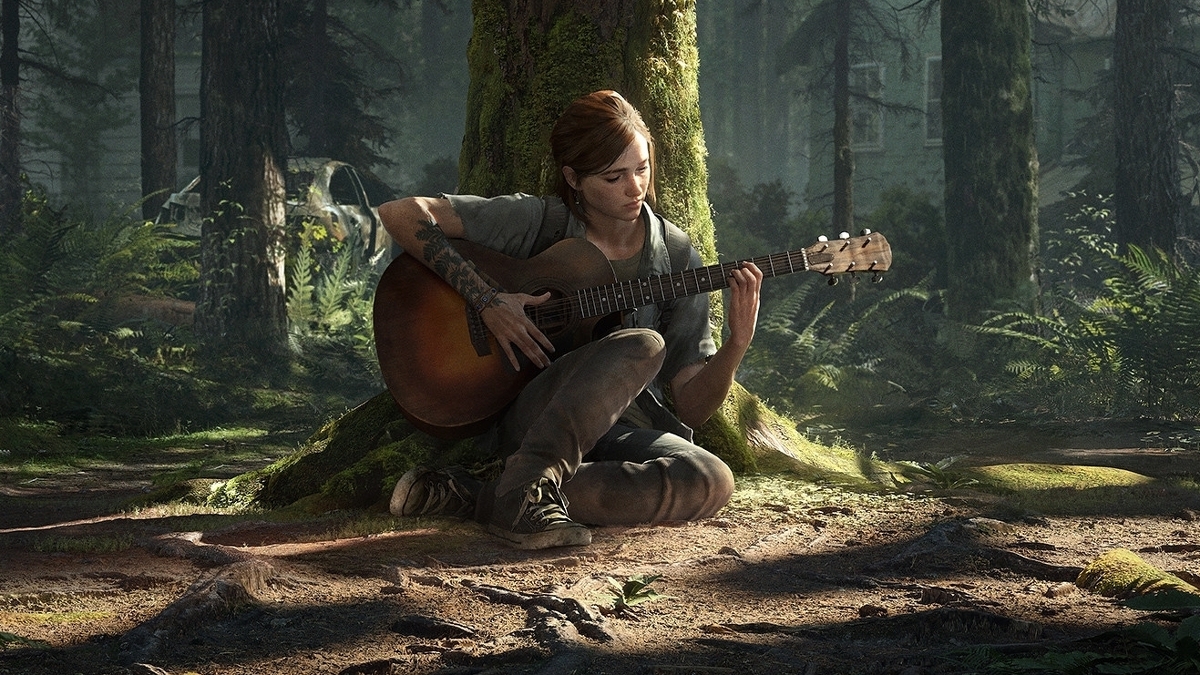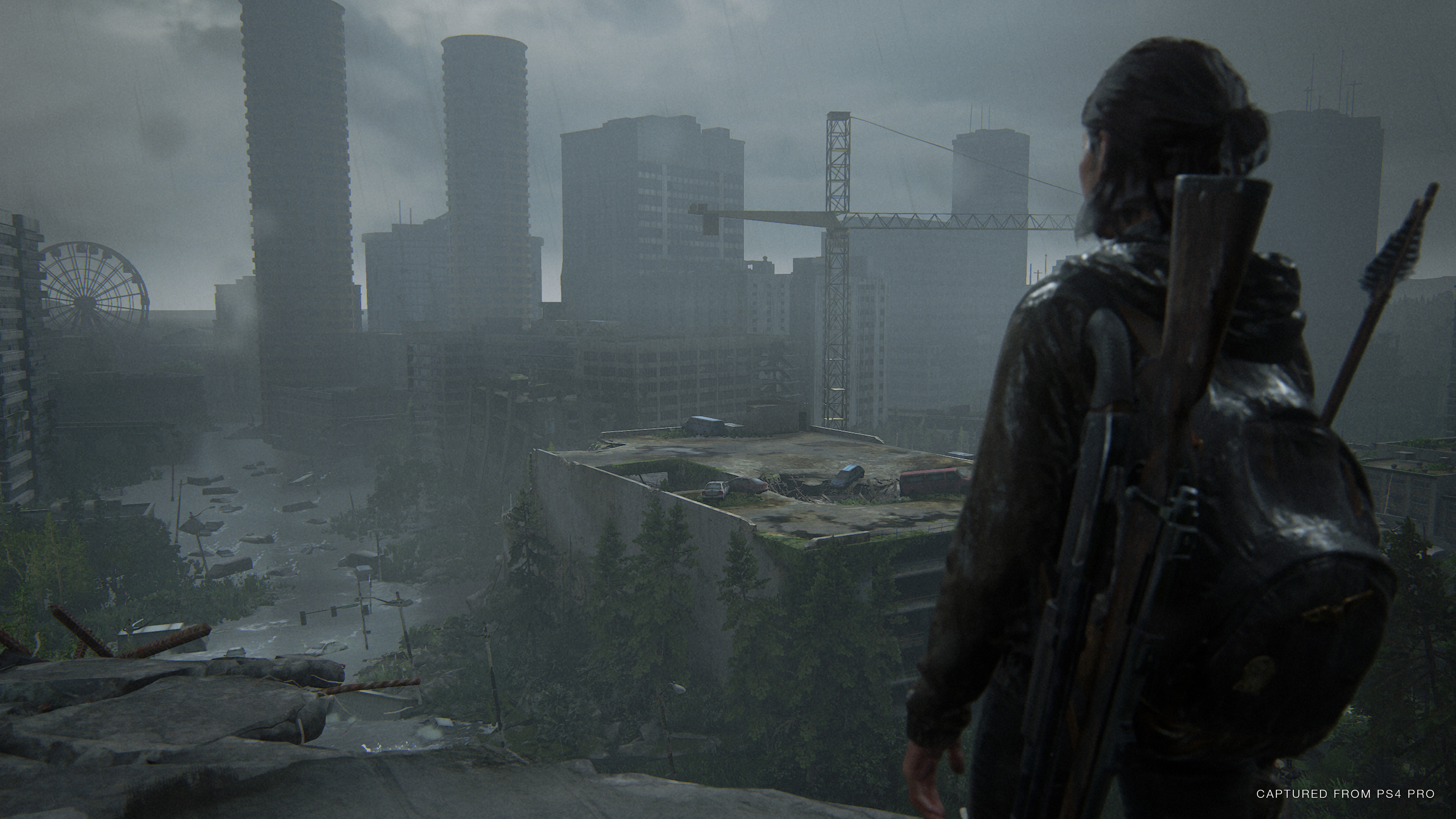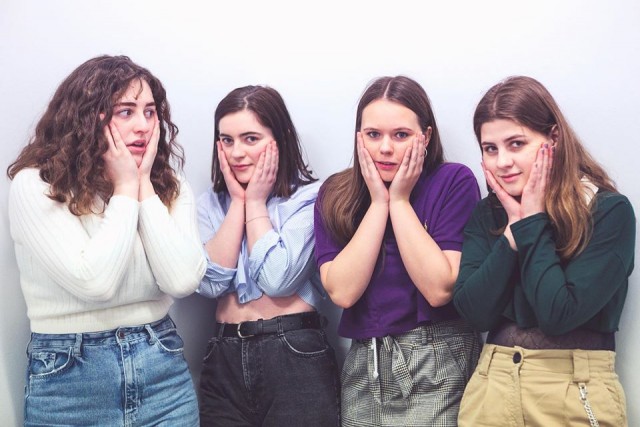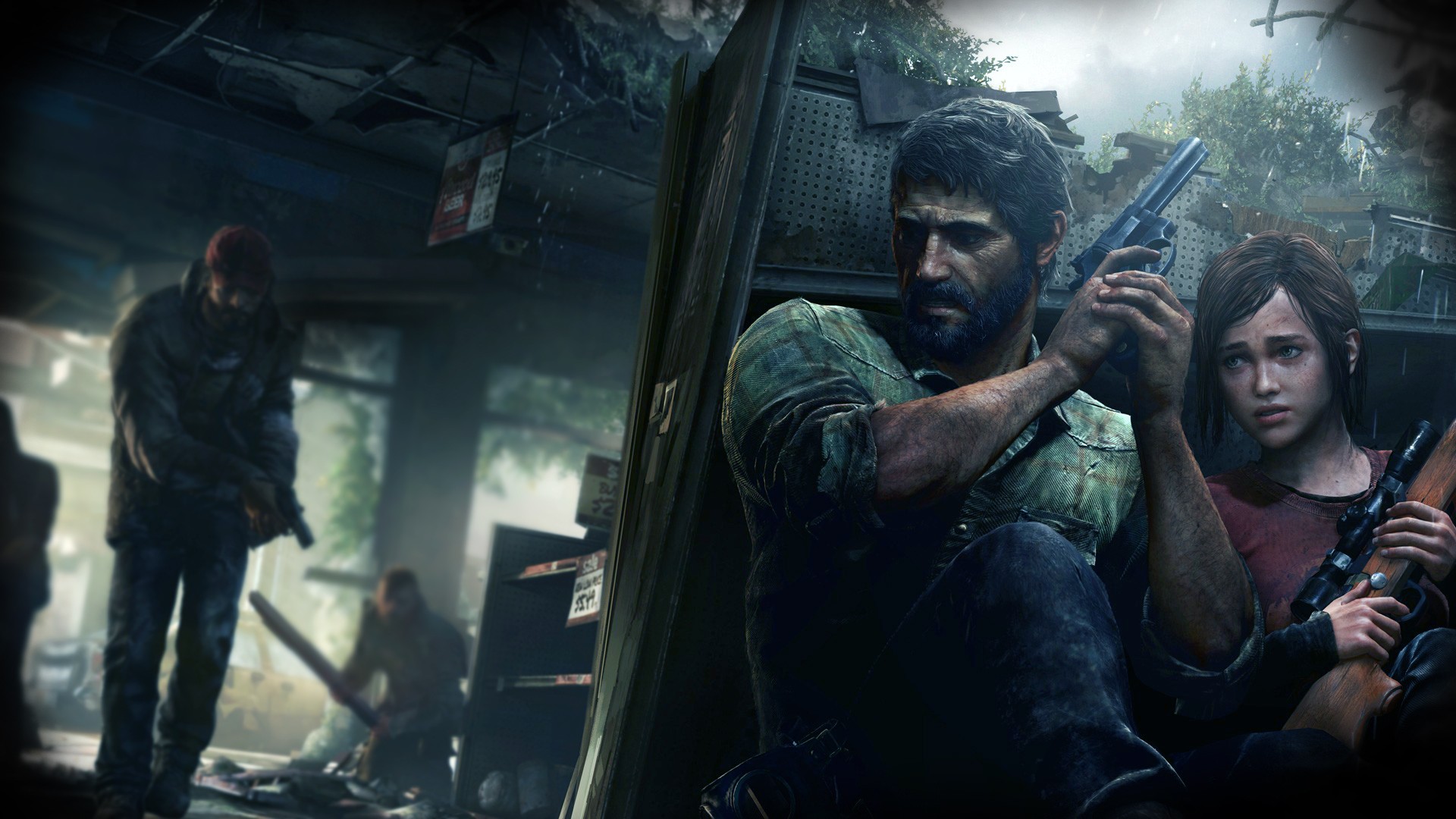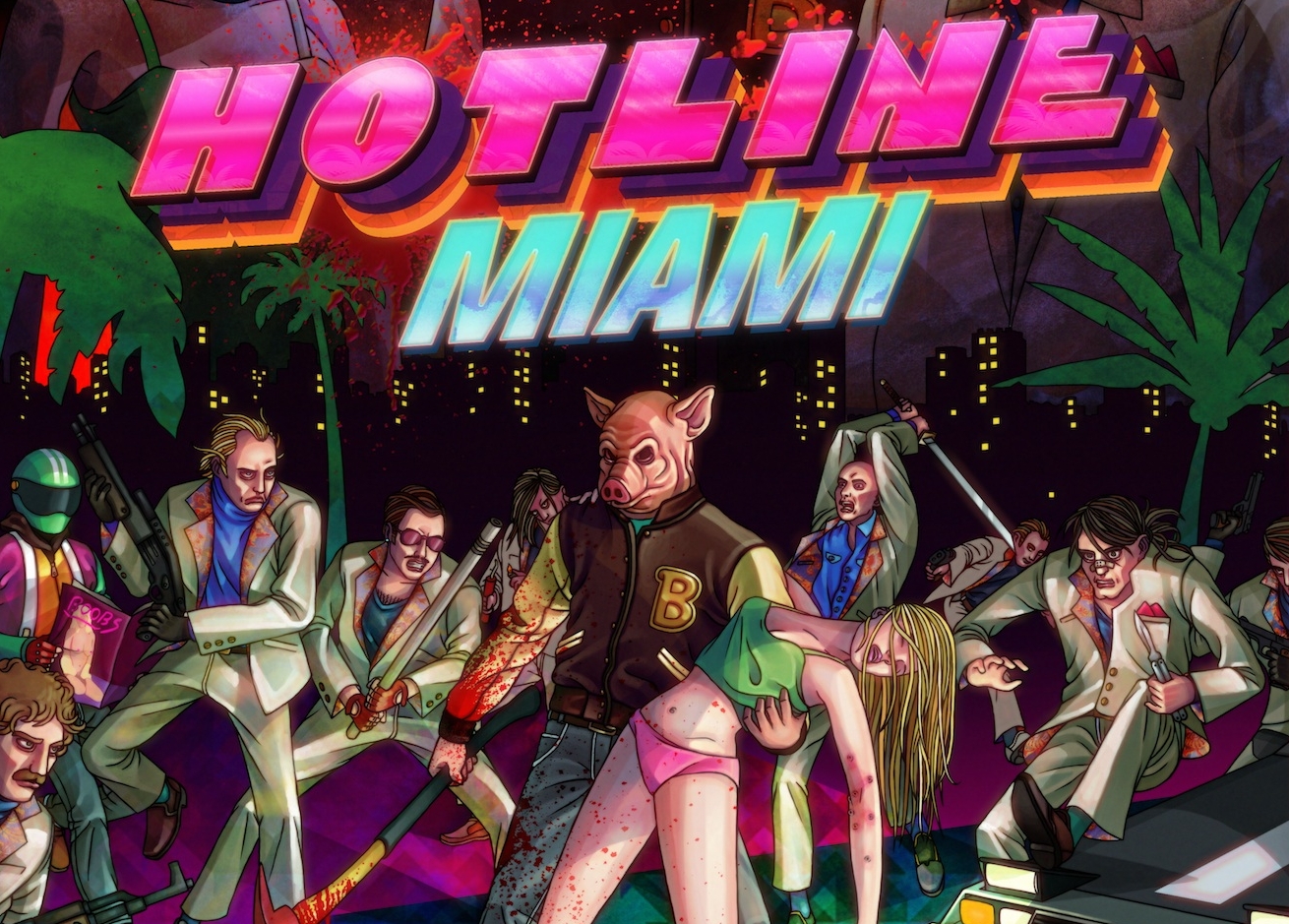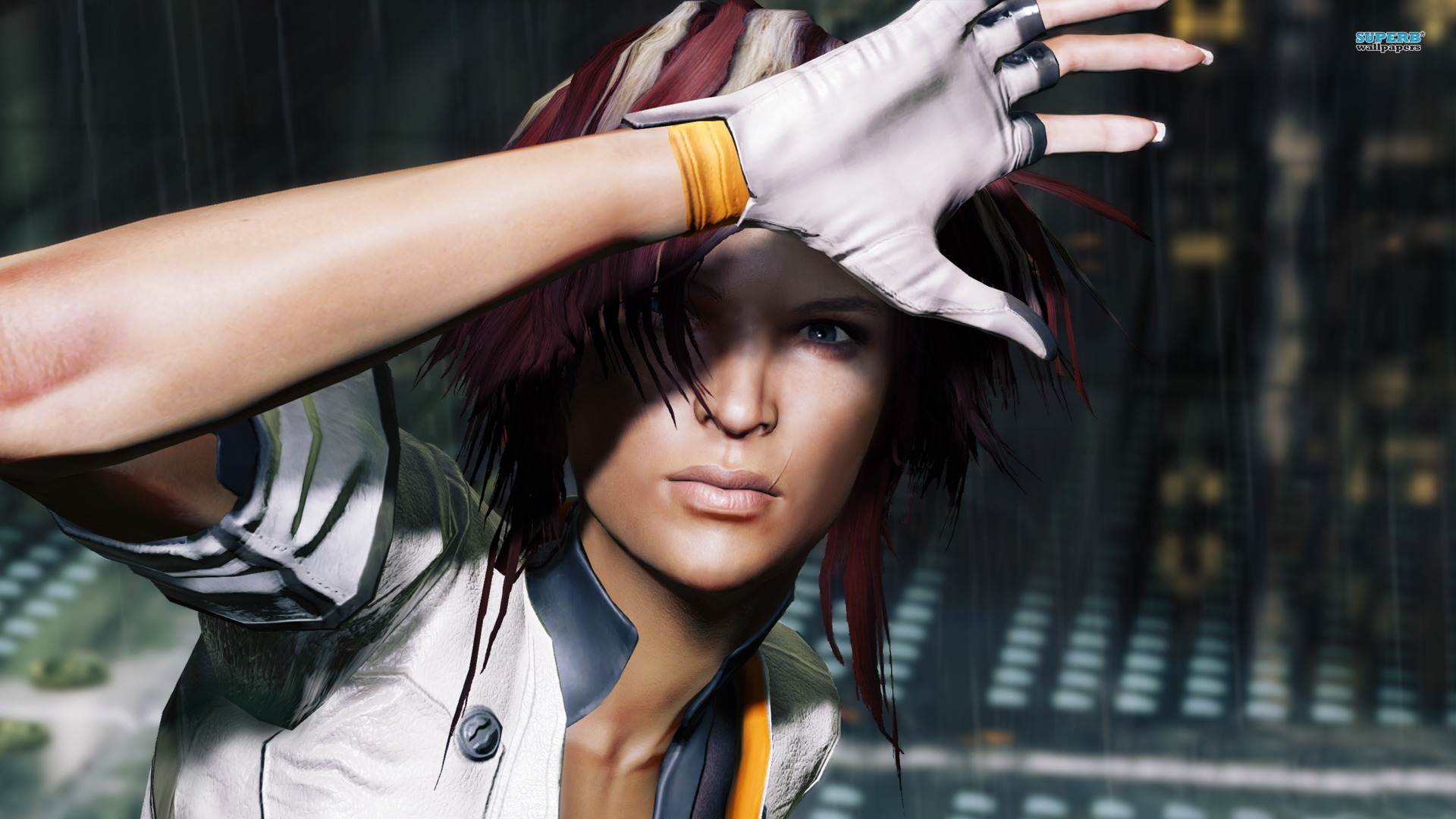In gangster movie The Road To Perdition, Paul Newman’s mob boss character mournfully intones, “This is the life we chose, the life we lead… and there is only one guarantee: none of us will see Heaven.” This quotation is particularly apt for The Last Of Us Part II, which deals with similar themes of crime and redemption, heinous deeds and consequent trauma, and the repercussions of acts committed by ourselves and those who came before us. Rarely has a videogame so deftly and intelligently explored concepts of violence and the accompanying cognitive dissonance even if the way in which it does so will be uncomfortable and off-putting for some players. From the outset, The Last Of Us Part II is uncompromising in its vivid depiction of cruelty, and there is no doubt that its content will be controversial and divisive, yet it is equally tender, emotive and thought-provoking. Narrative decisions made by the development team at Naughty Dog will haunt the player long after finishing the game, just as the characters themselves are haunted by their actions, and at times you will be astounded by the ways in which Neil Druckmann and Hailey Gross defy expectations and rewrite the rulebook of the conventions of storytelling. Playing The Last Of Us Part II is by turns thrilling and deeply upsetting, and if this rhythm is too much to stomach for some, that is precisely the point. Whereas other flagship titles enable the player to mow down hundreds if not thousands of soulless avatars without a second thought, this modern survival horror raises philosophical questions not only about the purpose of the medium but also about the current state of our broken world.
This might sound like a grand and unsubstantiated claim but one of the eeriest aspects of The Last Of Us Part II is how it is a mirror, to invoke the ghost of Joseph Campbell, for our current times. Firstly, there is an almost comic irony – one, as evidenced by their social media, that is not lost on Naughty Dog themselves – about releasing a game chronicling a global pandemic while the real world on the other side of the glass is also recoiling from a not too dissimilar global pandemic. In the first game, a Cordyceps fungus transformed infected hosts into crazed and cannibalistic human-plant hybrids, some of which actually suffer petals and plates bursting out of their skulls and limbs, and society quickly fell apart, dividing the population between the aforementioned walking shrubberies, sadistic marauders and pockets of survivors. The latter camp featured teenager Ellie and surrogate father Joel, whose relationship formed the core and heart of the first instalment. The sequel, set five years later, further explores this bond. Both are now living in Jackson, a walled off, fully functioning town where people are making new lives for themselves and existing in harmony. Beneath the surface, however, both Ellie and Joel are struggling with the gut punch decision the latter made at the end of the first game. Ellie is also coming to terms with trust issues, which leads the narrative into the nature of her sexuality, as previously explored in standalone episode Left Behind and written with equal sensitivity here. Unlike so many other jockish and misogynistic releases, the treatment of female characters – and a wide range of female characters at that – is empowering, empathetic and never sensationalist. It is one of the elements that counterbalances the barbarity elsewhere and is in part what makes playing as Ellie so rewarding: a gamer who is simpatico with their avatar is more likely to find the experience worthwhile, even when that character does terrible and questionable things. The way in which The Last Of Us Part II consistently runs this knife edge is one of its many strengths. Naughty Dog’s other franchise Uncharted, in which they bottled a different kind of lightning, may star charismatic protagonist Nathan Drake but one would be hard-pushed to argue that its storytelling, while brisk and fun, is emotional. Ellie, however, is more potty-mouthed and tough-nutted than ever before but this exterior barely conceals the anguish and anger that propels her out of Jackson and towards Seattle, one of the game’s other main locations.
To say more about what happens next would be ill-advised, not only because so much of the appeal and The Last Of Us Part II hinges on the many surprising turns, tangents and twists taken over its lengthy runtime but also because too many spoilers have already been spilled onto the internet. Some time ago, mean-spirited hackers released vital plot details, locations and gameplay mechanics, many of which are entirely without context. While this is frustrating and saddening, it also indicates just how great are the expectations weighing down upon the arrivals of this game. Few other releases have been anticipated quite so feverishly, which should indicate the regard with which the first instalment is held. Therefore, just as The Last Of Us was the swansong of the Playstation 3, there is no doubt that Part II will act in the same role for the Playstation 4. Doubters will naturally argue that a videogame can be of cultural significance but what this title says and how boldly it says it will be discussed and reflected upon in years to come. While the surrounding furore about online leaks is an integral part of the game’s development, what is more satisfying is the way in which The Last Of Us Part II both lives up to and pushed against its reputation, confounding and rewarding the player in equal amounts. Therefore, if you do not wish to do know anything at all about the game, I would suggest not reading the remainder of this review. I will respectfully avoid spoilers both major and minor yet if you want to experience it completely cold, and I suggest that you should, I will say this… Yes, it is fantastic. Truly fantastic. Yes, it is frightening. In fact, a baseline stomach-sick level of tension and unease is maintained for its entire duration. Yes, it is emotional. At times uncomfortably so. Yes, it plays well. Very well indeed. Naughty Dog has scrutinised and quality assured every element, major or throwaway, in order to develop a product that is entirely worthy of your time.
So, if you wish to forge ahead, let’s get into some of the non-spoilery, non-embargo-breaking specifics of gameplay and other mechanics. One of the things that makes The Last Of Us Part II such a thrill ride is the way in which it throws you into tense situations and lets you figure the best way of getting through them. Combat sequences, for example, can be approached stealthily or by unleashing your arsenal though the latter is more likely to get you killed, particularly when facing off against groups of infected in tight spaces. “Clickers”, those poor humanoids who have been blinded by fungi splitting open their crania yet have heightened hearing, will rip you asunder if they catch you so trying to take them down involves precision planning and nerves of steel. Alternatively, you could attract a group of Clickers so they will attack a group of human enemies, saving you the hassle if resources or your health are low. Elsewhere, opposing factions, the details of whom should be discovered for yourself, can be dispatched quietly or in the traditional videogame way yet they are given personality by the fact that they call to each other by name or shout warnings about your location, both adding more personality to their brief appearance yet also enhancing the idea that you are taking out flesh and blood characters. Meanwhile, dogs will track your scent unless you evade them, sniffing the contrail you leave behind like Scooby Doo following the curly aroma of a sandwich. Melee combat is both satisfying and horrifying in its visceral nature, carrying the visual quality and intensity of 1970s Horror cinema: beaning some poor sap with a crowbar, using another as a human shield or unseaming yet another’s neck results in an arterial spray and unpleasant death gurgles as they fall to the ground.
While The Last Of Us Part II is frequently monstrous, this does not mean that it does not contain moments of great beauty. Seattle itself has been partly reclaimed by nature, overgrown with verdant greenery and teeming with wildlife. At times it is reminiscent of Horizon Zero Dawn in its depiction of a once populated city slowly being painted over. It is here where linear sequences give way to sections that are not quite open world but certainly give the player more freedom in how they go about navigating the landscape. Think the lake section of God Of War or the middle part of Uncharted: The Lost Legacy and you will be along the right lines. The intrepid player will find riches of environmental storytelling: notes, diaries, letters, graffiti and the like all reveal stories of those who are long gone, some of which tie in to the game’s main storyline and others which suggest other lives running parallel. These elements are truly fascinating and help to build a believable world, therefore rendering the impact of the outbreak all the more tragic. Druckmann previously announced that few players will find everything on their first run-through, and he is absolutely right: those who wander off the beaten path, who break windows or move dumpsters to access higher ledges, will discover bookstores, supermarkets, bank vaults, coffee shops… each of which is loaded with collectibles and secrets. The sense of exploration is akin to Skyrim or perhaps more accurately Fallout and provides a pleasant tonal shift from the barbarism elsewhere – unless, of course, you happen to stumble across a nest of infected.
That said, you are likely to hear these leafy lunatics before you hear them. The sound design in The Last Of Us Part II is uniformly excellent, notably in the way that diseased enemies sob or gibber while they swat at their addled brains, or the way in which the stirring soundtrack rises and falls in sync with what is happening onscreen. The voice acting is uniformly impressive, not only in the delivery of the lines but also the way in which it is complemented by the characters’ facial expressions. Years of motion capture work with real actors lifts the game high above the uncanny valley, again making the major story beats all the more powerful. At times, this attention to detail is breathtaking. When Ellie plays the guitar, for example, the placement of her fingers on the fretboard is entirely accurate, and music fans will both be tickled and stirred by the use of this instrument in certain moments. The way in which her brow furrows when she is furious or her mouth wobbles when she thinks on her actions. The bruises and grazes on her skin. The patches on her backpack. The way in which she adjusts her hair or reloads her gun. All of these grace notes go together to make Ellie one of the most believable characters in videogame history. Like Left Behind, this is her story yet it would be nothing if the player was not as not as drawn in as they are thanks to the all too human way in which she is presented.
In fact, Naughty Dog has gone to considerable lengths to make The Last Of Us Part II accessible to everyone. They deserve kudos for the numerous options and features to enable the hearing and sight impaired to play, as well as those with mobility disabilities. In this regard, the game sets a new standard for inclusivity, reaching out to gamer groups who have for too long been disregarded. In this light, all of the negative press about early leaks fades into insignificance. Naughty Dog have a narrative to create outside of the one inside the game itself: they are leading the way with intuitive design of audio cues, magnify pan and scan, one-handed control schemes… this approach has incredible potential. Hopefully, other development companies will follow suit.
Finally, it is fitting that The Last Of Us Part II is conscious of videogame history. There are both winking and more obvious references to releases in the genre. A memorable section recalls Silent Hill. Another has shades of Dead Space. Another features an enemy playing an infamously violent title on a handheld device. Yet, the most striking aspect is that this release clearly knows that it is breaking new ground, that it is cementing its place in the “Best Ever” canon. Some players will be genuinely unnerved by what they see and hear. Others will be outraged by the audacity of it all. Others, and these are the ones that you should listen to, will be bowled over by the way in which this game shifts fluidly between sections of frantic gunplay with those of exploring vast areas of silence or darkness, how it balances storytelling with turning that story backwards and looking at it afresh. While it is hyperbole to argue that a videogame can be important, The Last Of Us Part II is most certainly bold, brutal and brave. Ross Thompson

